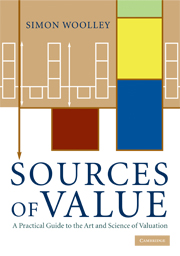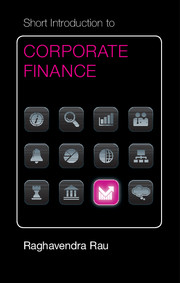Sources of Value
Sources of Value is a comprehensive guide to financial decision making suitable for beginners as well as experienced practitioners. It treats financial decision making as both an art and a science and proposes a comprehensive approach through which companies can maximise their value. Beginners will benefit from its initial financial foundation section which builds strong basic skills. Practitioners will enjoy the new insights which the eponymous Sources of Value technique offers – where values come from and why some companies can expect to create it while others cannot. The book also introduces several other techniques which, together, spell out how to combine strategy with valuation and an understanding of accounts to make a fundamental improvement in the quality of corporate financial decision taking. Sources of Value is written in a readable conversational style and will appeal to those already working in companies as well as those studying on a business course.
- Extremely practical, written by a pre-eminent practitioner, recognising that valuation requires mastery not just of techniques (science) but also an understanding of the strategic context (art)
- Assumes no prior knowledge so appropriate for complete beginners, but has enough original ideas for practitioners to benefit from
- Introduces two original new techniques - sources of value and abbreviated financial summary - along with numerous examples of how they can be applied for superior decision making
Reviews & endorsements
'If you want to calculate present values, turn on a computer. If you want to understand present values, and also know how to know when a calculated value is likely to disappoint, read this book.' Stewart C. Myers, Massachusetts Institute of Technology
'Recent problems in the financial sector, arising in part from the pursuit of growth without underlying value, should remind us of the importance of understanding the driving forces of value creation. Simon Woolley's Sources of Value approach throws light on this question in a deep yet practical way. The author is a thoughtful and experienced practitioner and his book draws on this to offer insights into the key features of value creating strategies. As well as providing a readily assimilable yet thorough grounding for beginners, Sources of Value contains nuggets which will be appreciated by the most seasoned of practitioners.' John Buchanan, Board member of AstraZeneca, BHPBilliton, Smith & Nephew, and Vodaphone, formally Group CFO, BP
'I firmly believe that a sound grasp of the theoretical underpinnings improves decision making greatly. Simon Woolley's book offers real help here. It brings financial theory to life in a practical way and offers some deep and new insights into the topic of shareholder value creation.' Chris Gibson-Smith, Chairman, London Stock Exchange
Product details
May 2009Paperback
9780521737319
642 pages
247 × 174 × 30 mm
1.3kg
Available
Table of Contents
- List of figures
- Preface
- Acknowledgements
- Part I. The Financial Building Blocks:
- 1. Economic value
- 2. Financial markets
- 3. Understanding accounts
- 4. Planning and control
- 5. Risk
- Part II. The Three Pillars of Financial Analysis: Overview
- 6. Modelling economic value
- 7. Sources of value
- 8. What sets the share price? Where from, where to?
- Part III. Three Views of Deeper and Broader Skills:
- 9. Cost of capital
- 10. Valuing flexibility
- 11. When value is not the objective
- Overall conclusions
- Appendices: I. Suggested answers to individual assignments
- II. Bibliography
- III. Glossary
- IV. Index
- V. Annotated bibliography.










